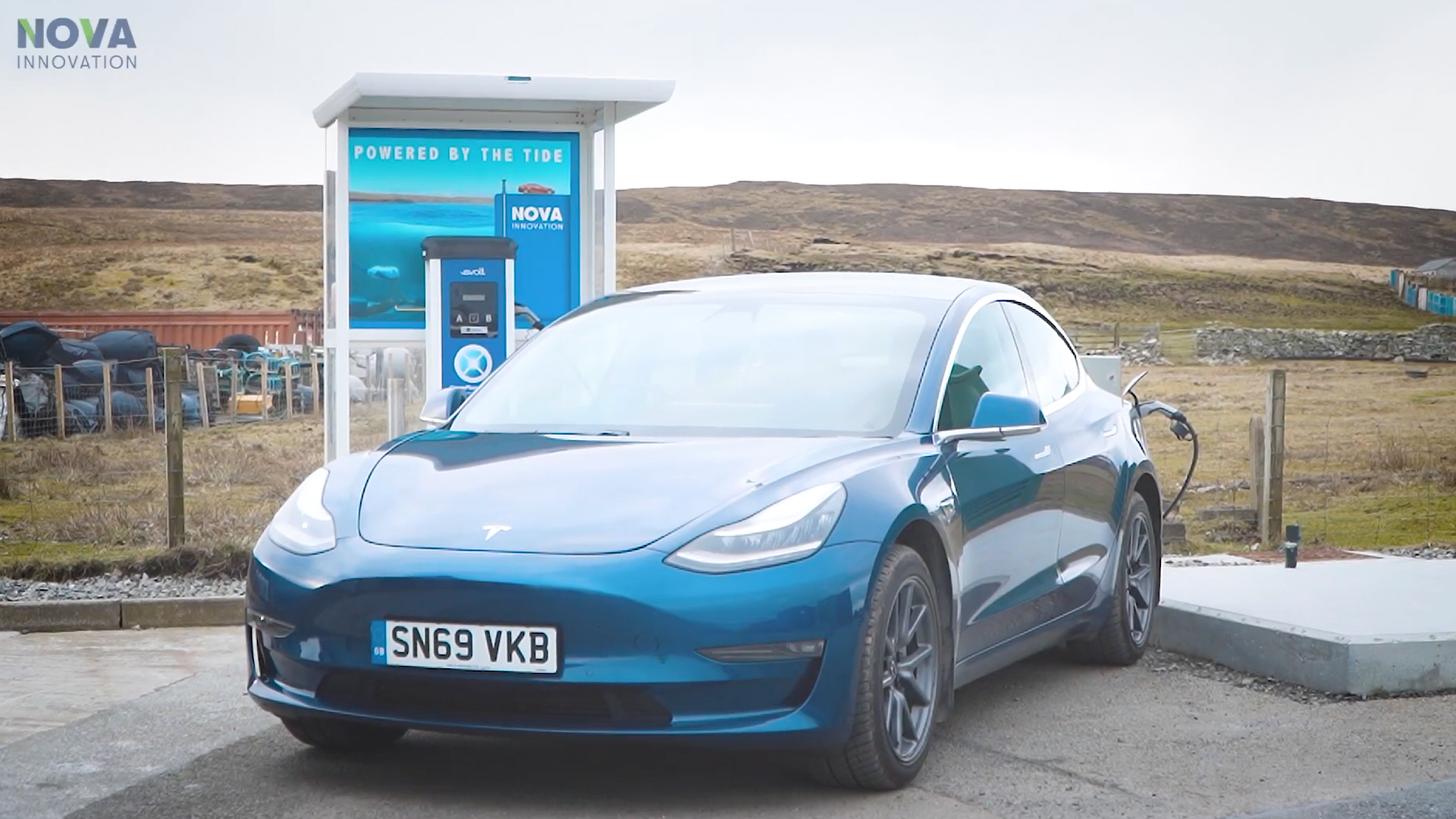

A remote Scottish island has had its first EV charger installed that runs solely off tidal power. The project on Yell, part of the Shetland Islands, has been led by Nova Innovation, a company that’s been using its tidal turbines to deliver power to the island for half a decade but had never previously directly wired an EV charging point to its supply. Although at a maximum of 22 kilowatts—the charging isn’t particularly fast—it could be a great solution on, ironically, an island near North Sea oil supplies.
Yell isn’t a big place. It’s the second-largest of the Shetlands but covers a pretty cozy 83 square miles of land, so journeys on the island are unlikely to start testing even the most limited EV’s range. As with anywhere, the Shetlands have had a tension between residents being very willing to switch to electric cars and both the price and charging infrastructure proving prohibitive. Fellow Scottish island group the Orkneys had success with driving adoption by putting in chargers and the Shetland Islands saw charging point usage double from 2018 to 2019, with 27,000 kilowatt-hours being charged from public sources that year. So it’s not an ornamental installation—it’s something Shetlanders want and actually plan to use.

The Shetland Islands aren’t connected to the main electricity grid of Great Britain, with supply managed from Lerwick on the Shetland “mainland” island and distributed to Yell and Unst via submarine cables. Improving the supply has already led big projects both in terms of renewable use—via Nova’s tidal turbines and other schemes—and grid storage to allow the islands to better balance their usage. Nova first started working on tidal power in Shetland in 2016, installing three 100kW turbines, so although the eVolt charger installed on Yell isn’t a fast charger, it’s not because of a limitation on the supply.
If you’re reading this article from Yell and wondering how to get your EV to a renewably-sourced charger, then it’s located at the north of the island on Cullivoe Harbour, which faces on to a strip of water between Yell and the next island, Unst, called the Bluemull Sound. That’s where Nova’s turbines were originally installed, so it makes sense that that’s the easiest place to put a charger drawing power from them.

Nova Innovation’s CEO Simon Forrest was typically effusive about the project for someone who’d just installed a tidal-powered EV charger: “Our technology generates electricity from the immense power of the seas, and it is changing the way we power our lives—from how we make a cup of tea to how we travel. We now have the reality of tidal powered cars, which demonstrates the huge steps forward we are making in tackling the climate emergency and achieving net zero by working in harmony with our natural environment.”
“In November, the eyes of the world will be on Scotland as nations come together to combat climate change at COP26,” Forrest continued. “At Nova, we deliver blue energy solutions that can be deployed all around the world, delivering clean, predictable energy direct from the sea to our clients to meet whatever energy needs they have—electricity, heat or transport.”
In Nova’s press release they also included a quote from Fiona Nicholson, a Cullivoe resident who drives an electric car. “I am delighted that we have an EV charge point powered by the tide,” Nicholson explained. “I work in Lerwick, so I need access to a charge point, and it is exciting to have this on my doorstep. Most people in Shetland live close to the sea—to be able to harness the power of the tide in this way is a great way to use this resource.”
Got a tip? Mail me on hazel@thedrive.com